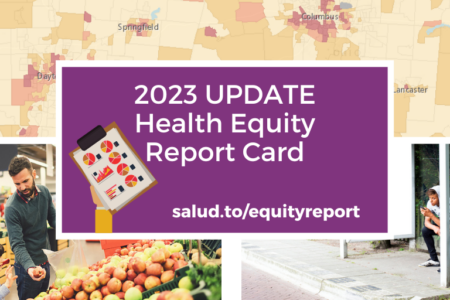
Share On Social!
$11,000 is a lot of money. You can get a pretty decent car. You can buy a year’s worth of groceries to feed a family of four. You could even get 11 of the new iPhone X.
Or you can pay a year of childcare for one child.
With the average cost of center-based daycare at $11,666 a year, many low-income Latino families struggle to afford childcare. Or it comes at the expense of healthy food or preventive medical care.
That’s why city leaders in San Francisco (15.3% Latino) are exploring how to provide affordable universal childcare to residents to ease parents’ financial burdens.
District 6 City Supervisor Jane Kim plans to introduce the measure on the November 2018 ballot.
“If we truly believe that families are the backbone of our city, then we all have to do what we can to hold onto them,” Kim said in an interview with The San Francisco Examiner. “We can do better, and we have to.”

What Universal Childcare Means in San Francisco
As part of the proposal, Kim wants to create a system that would reduce childcare costs for San Francisco families to just 10% of their income.
In San Francisco, the cost of full-time childcare for families with an infant is higher than the average of $11,666 a year.
Costs can average up to $22,800 a year, according to research from the Children’s Council of San Francisco:
- For families with children ages 1-4, costs range from $14,400 to $18,000 per year.
- For families with an infant, costs range from $16,800 to $22,800 a year.
The San Francisco area has among the nation’s highest cost of living for a family of four.
In fact, homes with a six-figure income is now considered “low income” due to a threshold that determines who can qualify for affordable and subsidized housing, according to the U.S. Department of Housing and Urban Development.
Universal childcare could spur better educational outcomes for kids and help more mothers join the workforce, according to Kim.
“We should act now to protect and advance the opportunities for those who are retaining and remaining in the middle class,” Kim said.
A similar proposal has been drafted in Alameda County (22.6% Latino), which is adjacent to San Francisco. It will appear on the June 2018 ballot.
Read more about the link between income and health here:
- The Wage Gap for Latino Millennials is Growing #SaludIncome http://salud.to/2zeqOFV
- City Looks to Increase Minimum Wage; Faces Resistance from State #SaludIncome http://salud.to/2yKjORi
- Low Wages Leave Many Latino Families in NV Struggling #SaludIncome http://salud.to/2hy2B3H
By The Numbers
142
Percent
Expected rise in Latino cancer cases in coming years



